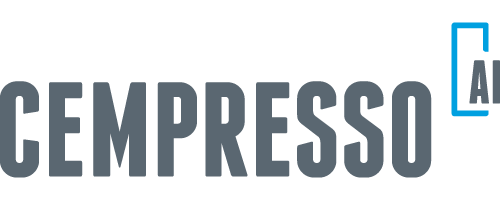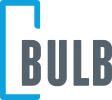
Overcoming the challenges of generative AI adoption is quickly emerging as a significant priority for businesses in every industry. According to a McKinsey report, while general AI adoption levels have remained consistent in recent years, 40% of companies are increasing their AI investments, specifically with a focus on unlocking the benefits of generative AI.
The versatility and power of large language model-powered generative AI solutions can pave the way to astronomical business growth. Not only do generative AI tools improve productivity and efficiency, reducing operational expenditures, but they can boost profits too.
In the customer service landscape, for instance, generative AI solutions can empower companies to implement strategies that increase customer satisfaction and retention. According to studies, satisfied customers spend 140% more than other consumers, and help to drive new buyers to your business.
Unfortunately, while generative AI solutions have limitless potential, the implementation of this technology comes with its fair share of challenges.
Here are some of the most significant challenges of generative AI adoption business leaders need to consider today (and how you can overcome them).
The 8 Challenges of Generative AI Adoption
Adopting generative AI technologies isn’t as simple as installing new apps and tools for your contact center or back office teams. There are numerous hurdles to consider, from training and fine-tuning AI models to suit your specific use cases, to preserving security and compliance.
While the biggest challenges facing your organization will vary depending on your specific circumstances, most companies will need to overcome one or more of the following hurdles.
Challenge 1: Aligning Data and Resources
Like many artificial intelligence solutions, generative AI systems are reliant on large volumes of high-quality data. If the data you use to train and inform your models is incomplete, erroneous, or bias, the output you get from your apps and bots will be unreliable.
Unfortunately, many companies struggle to unify and clean their data ecosystem prior to generative AI adoption. To overcome this issue, businesses need to take a multi-faceted approach to data readiness. This starts with identifying which data will be essential to your AI models, based on your intended use cases.
For instance, if you’re building bots to help improve agent training initiatives, you’ll need to access data from previous training initiatives, customer service tools, workforce management apps, and knowledgebase documents. Next, you’ll need to:
- Evaluate and clean your data: Regularly review and sanitize your databases, searching for inaccuracies and potential biases. Ensure that your databases include diverse data sets to enable more holistic responses, and eliminate bias issues.
- Prioritize integration: Choosing a generative AI platform that can integrate and consolidate data from multiple different environments will save you a lot of time and money. Ensure your solution is flexible enough to integrate with your existing resources.
- Leverage human-led tuning: Don’t rely exclusively on your generative AI bots to learn and improve over time. Make sure your data analysts and IT team members are constantly evaluating bot performance for inaccuracies and problems.
Challenge 2: Generative AI Skill Shortages
Limited resources account for many of the challenges of generative AI adoption. In particular, many companies are struggling to access the skilled data analysts and development professionals they need to fine tune and optimize generative AI models.
Around 6 in 10 IT workers say their companies are still struggling with a shortage of AI skills in 2024. As competition for talent increases, companies need a way to overcome this skills gap. One option could be to implement generative AI training initiatives designed to teach employees how to use the latest tools ethically, and effectively in their workflows.
Another option could be to outsource generative AI development and implementation tasks to specialists with experience leveraging large language models and frameworks. One of the easiest ways to overcome the generative AI skills shortage, is to implement solutions and technologies that put the user experience first.
Innovative generative AI platforms, like the Cempresso AI Studio eliminate the need for extensive developer knowledge, by giving users access to a simple drag-and-drop environment where they can configure and design AI models for various applications. With this user-friendly and accessible platform, companies can empower all employees to work together on AI development and implementation, regardless of their experience in the landscape.
Challenge 3: Ethical Concerns and Accountability
Ethical concerns have emerged as a major consideration for many companies implementing generative AI tools. Though generative AI frameworks and algorithms are growing increasingly advanced, they’re not foolproof. Many solutions still suffer from “AI hallucinations”, which mean they can confidently give incorrect answers to questions.
Some solutions can also blur ethical boundaries by stealing copyrighted information from other environments, leading to potential fines and legal repercussions. Working with an AI solution platform that gives you complete transparency and insights into how your AI systems and models work, and where they’re sourcing data from can help you to eliminate these issues.
Additionally, establishing and implementing ethical guidelines that inform employees on how they should use generative AI tools will help to reduce risk. Another good strategy is to regularly review the responses generated by your AI tools, or set up automated solutions that notify your team when a response is considered risky, or unethical.
Challenge 4: Maintaining Legal and Regulatory Compliance
Just as it’s important to ensure your organization is ethical and transparent about the way it uses and trains AI algorithms, it’s crucial to ensure your strategies align with evolving regulatory and compliance guidelines.
While generative AI tools can actually help you to mitigate compliance risks, monitoring suspicious activities and helping you track the flow of data, there are hurdles to address too. Some organizations may need to consider sourcing insights from legal experts, to help them identify potential compliance risks in the way they use data to train and support bots.
Others will need to consider conducting regular compliance audits, ensuring they’re tracking potential issues within AI operations and outputs that could lead to threats. In all industries and environments, it will be important to implement flexible generative AI platforms. After all, regulatory guidelines and compliance frameworks are constantly changing as generative AI continues to evolve.
A flexible platform will allow you to update workflows, policies, and strategies to ensure you remain compliant, no matter how your industry evolves.
Challenge 5: Data Privacy and Security
As mentioned above, most generative AI solutions are powered by “large language models” which rely on access to huge volumes of data from throughout your business ecosystem. The vast amount of data utilized by AI systems poses significant data security risks, with the potential for breaches and misuse. Additionally, companies need to ensure they’re protecting the privacy of individuals whose data is utilized for training and tuning purposes.
The steps mentioned above for improving ethical AI use and compliance will help with these issues. However, companies will also need to ensure they’re implementing layers of security in other areas. This could mean tuning AI bots to remove sensitive information from data collected and stored in business ecosystems, to reduce potential threats.
It could also involve using access control mechanisms to limit which employees have access to certain AI-powered workflows and data. In all cases, adopting top-tier encryption technologies will be essential to securing data inputs and outputs. Ensure the generative AI solutions you implement have the right security measures in place to protect you from data breaches and leaks.
Challenge 6: Huge Computational Resources and Costs
While there are various plug-and-play examples of generative AI tools out there, like Microsoft’s Copilot solutions, or ChatGPT, these technologies rarely offer the purpose-driven functionality modern businesses need. To ensure they’re getting the most value out of their generative AI tools, companies need to be able to customize and fine-tune their AI models.
Unfortunately, training generative AI models doesn’t just require a huge investment in skilled personnel. It can also require companies to spend significant money on computational resources, such as high-performance GPUs. Many smaller businesses can struggle to adopt generative AI solutions, simply because they don’t have the right infrastructure.
The easiest way to address this issue is to invest in a generative AI platform that helps to reduce the impact on your computational resources. For instance, the Cempresso AI Studio can leverage both pre-built open source LLMs and proprietary frameworks, based on your available resources.
It also offers access to an existing back-end infrastructure, which houses the logic for your AI builder, a large vector library, and scalable internal database. The flexible nature of Cempresso AI Studio ensures companies can tap into the benefits of generative AI, without breaking their budget.
Challenge 7: Overcoming Resistance to Change
Throughout every industry, employees are growing more open to the idea of adopting generative AI tools. However, there are still many employees throughout the workforce who believe the adoption of these technologies will render them obsolete, paving the way for hyper-automation to replace human roles.
The reality is that cutting-edge AI technology should empower and augment, not replace human employees. It should help companies to accomplish more with less, by ensuring they can automate repetitive tasks, improve employee productivity and efficiency, and reduce workplace errors.
Showing your team members that you’re committed to a strategic alignment between human expertise and AI innovation will help you to overcome change resistance. Demonstrate to employees how your AI tools can help them spend less time on repetitive tasks and more time on creative work.
Show them how AI tools can provide them with consistent coaching and guidance, helping them to achieve their professional goals faster. Provide teams with a sense of psychological safety, by helping them to understand how their roles will be affected by generative AI innovation. Additionally, make sure you’re consistently investing in training and resources that support adoption.
Challenge 8: Ensuring Scalability and Adaptability
Finally, as your organization evolves, and continues to explore new use cases for generative AI solutions, it’s important to ensure you have the freedom to scale your solutions. The technology you embrace for generative AI modelling and development should offer access to a modular environment that consistently adapts to suit your changing needs.
For instance, Bulb Tech’s Cempresso AI studio is designed specifically to support business agility and scalability. It can integrate with a range of different LLM solutions and APIs, comes with configurable blocks that make it easy to design and customize flexible flows, and enables rapid access to new resource libraries and tools.
With Cempresso AI Studio, companies can implement generative AI into their ecosystems at a pace that suits them, gradually increasing their investment and unlocking new opportunities. More importantly, they can access step-by-step guidance and support from the Bulb Tech team, to help them identify new opportunities for AI automation and areas for growth.
Businesses can combine their AI-powered modelling system with tools for chatbot and virtual agent development, proactive network management, self-service solutions and more. This incredible level of scalability and flexibility ensures businesses from all industries can tailor their generative AI roadmap to their specific needs, and increase return on investment.
Overcome the Challenges of Generative AI Adoption
Generative AI is quickly emerging as a must-have part of the modern business technology stack. Used correctly, it has the potential to reduce operational costs and improve productivity, enhance customer experiences, and even streamline everyday processes.
However, technologies as transformative as generative AI can be challenging to implement. Companies need a strategy to overcome countless hurdles, from change resistance, to security and compliance threats, and even end-to-end integration issues.
Fortunately, Bulb Technologies offers the perfect platform to help address all of these issues. With our flexible, secure, customizable, and easy-to-use Cempresso AI Studio platform, any company can unlock the benefits of generative AI, without the risks.
Whether you’re designing state-of-the-art self-service bots, creating real-time coaching solutions for team members, or just using AI to unify data and leverage valuable insights, our platform can help.
Contact the Bulb Technologies team today to learn how we can help you overcome the challenges of generative AI adoption, and maintain a competitive edge in your industry.
Ready to unlock the potential of Generative AI?
Contact us today and maintain a competitive edge in your industry!



